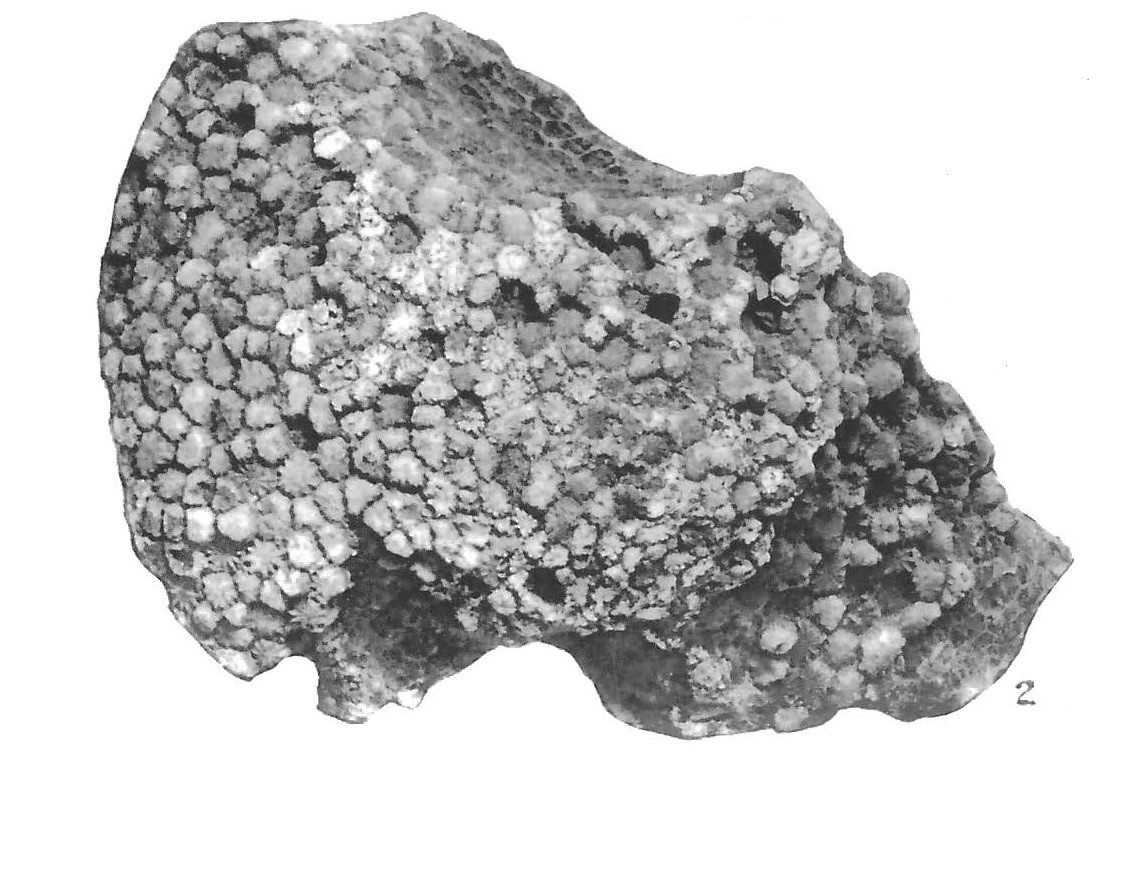
DISCLAIMER: This English version is translated from the original French. In case of any discrepancy, the French version shall prevail.
| Author: | Dresser, 1916; Foerste 1916, 1924 |
| Age: | Upper Ordovician (Richmondian) |
| Stratotype: | None |
| Type area: | Couleuvres Island, SW of Lake Saint-Jean (NTS sheet 32A09) |
| Geological province: | St. Lawrence Platform |
| Geological subdivision: | St. Lawrence Lowlands Platform |
| Lithology: | Limestone |
| Category: | Lithostratigraphic |
| Rank: | Formation |
| Status: | Formal |
| Use: | Active |
None
Background
Limestone strata called « Richmond » were studied by Dresser (1916), Foerste (1916, 1924) and Flower (1961) on Couleuvres Island, located ~3 km east of the town of Roberval and at Pointe Plate (south of Roberval). The island is ~1 km long and 0.5 km wide in sheet 32A09. According to Dresser (1916), rocks outcrops only in two places on the island. However, the abundance of angular-shaped rock fragments scattered along most of the coast suggests that they are buried under the silty soil that covers the island.
Desbiens and Lespérence (1989) mentioned that following the 6 m rise in the water level of Lake Saint-Jean in 1928 for hydroelectric purposes, outcrops of Couleuvres Island and Pointe Plate were submerged. Moukhsil and EL Bourki (2020) visited the island in search of possible outcrops, but to no avail.
This formation is Upper Ordovician in age and outcrops in the Grenville Province, at a great distance from the St. Lawrence Platform.
Description
The Île aux Couleuvres Formation consists of grey limestone, slightly argillaceous in places and cherty in others, with large amounts of silicified coral (Dresser, 1916).
Thickness and Distribution
In outcrop, the thickness of the limestone strata of the Île aux Couleuvres Formation generally does not exceed 60 cm above the water level of Lake Saint-Jean. The rocks dip ~5° to 10° eastward (Foerste, 1916).
Dating
None.
Stratigraphic Relationship(s)
The relationship between limestone of the Île aux Couleuvres Formation and other older Ordovician units of Lake Saint-Jean is not well defined (stratigraphic section). However, Foerste (1916, 1924) correlated this formation to a coral zone in the Richmondian (Upper Ordovician). However, the argillaceous nature of rocks of this formation suggests that they may have been deposited in a regular sequence over the Pointe-Bleue Formation, marking a new submergence towards the end of the Ordovician (Dresser, 1916).
Paleontology
The main fossils found in limestone of the Île aux Couleuvres Formation are: Crenulites rigidus (Billings, 1858 in Flower, 1961, part 1, page 29), Crenulites Blainvilli (Billings, 1858 in Flower 1961, part 1, page 86), two species identified only on Couleuvres Island (Flower, 1961). Foerste (1924, page 77) highlighted the presence of species Beatricea undulata Billings in the coral zone on Couleuvres Island. Similarly, Elias (1982 in Desbiens and Lespérence, 1989) reported the presence of rough coral Grewingkia rustica (Billings, 1858) on the island, which indicates a Richmondian age for limestone of this formation. Furthermore, identification of Flexicalymene retrorsa, a Richmondian species (Ross, 1967), tends to confirm this age (Desbiens and Lespérence, 1989).
References
Publications Available Through SIGÉOM Examine
MOUKHSIL, A., EL BOURKI, M. 2020. Geology of the Normandin Area, Grenville Province, Saguenay–Lac-Saint-Jean Region, Quebec, Canada. MERN. BG 2020-01, 1 plan.
Other Publications
DESBIENS, S., LESPÉRENCE, P.J., 1989. Stratigraphy of the Ordovician of the Lac Saint-Jean and Chicoutimi outliers, Quebec. Canadian Journal of Earth Sciences, volume 26, pages 1185-1202. doi.org/10.1139/e89-101
DRESSER, J.A., 1916. Part of the District of Lake St. John, Quebec. Geological Survey of Canada, Memoir 92. doi.org/10.4095/101662
ELIAS, R.J., 1982. Latest Ordovician solitary rugose corals of eastern North America. Bulletins of American Paleontology, 81 (314), pages 1-16.
FLOWER, R.H., 1961. Part I. Montoya and related colonial corals. New Mexico Institute of Mining and Technology, State Bureau of Mines and Mineral Resources, Memoir 7, pages. 1-95. geoinfo.nmt.edu/publications/monographs/memoirs/downloads/7/Memoir-7_Text_parts_I-II.pdf
FOERSTE, A.F., 1924. Upper Ordovician faunas of Ontario and Quebec. Geological Survey of Canada, Memoir 138. doi.org/10.4095/100856
FOERSTE, A.F., 1916. Upper Ordovician formations in Ontario and Quebec. Geological Survey of Canada, Memoir 83. doi.org/10.4095/101682
FOERSTE, A.F., 1910. Preliminary notes on Cincinnatian and Lexington fossils of Ohio, Indiana, Kentucky, and Tennessee. Bulletin of the Scientific Laboratories of Denison University 16 (1), pages 17-100.
ROSS, R.J., 1967. Calymenid and other Ordovician trilobites from Kentucky and Ohio. United States Geological Survey, Professional Paper 583-B, pages B1-B19. pubs.usgs.gov/pp/0583b/report.pdf
Suggested Citation
Ministère de l’Énergie et des Ressources naturelles (MERN). Île aux Couleuvres Formation. Quebec Stratigraphic Lexicon. https://gq.mines.gouv.qc.ca/lexique-stratigraphique/plate-forme-du-saint-laurent/formation-de-ile-aux-couleuvres_en [accessed on Day Month Year].
Contributors
|
First publication |
Abdelali Moukhsil, P. Geo., Ph.D. abdelali.moukhsil@mern.gouv.qc.ca; Mhamed El Bourki, GIT, M.Sc.A. mhamed.elbourki@mern.gouv.qc.ca (redaction) Mehdi A. Guemache, P. Geo., Ph.D. (coordination); Fabien Solgadi, P. Geo., Ph.D (critical review); Simon Auclair, P. Geo., M.Sc. (editing); Céline Dupuis, P. Geo., Ph.D. (English version); Nathalie Bouchard and Ricardo M. Escobar (HTML editing). |

